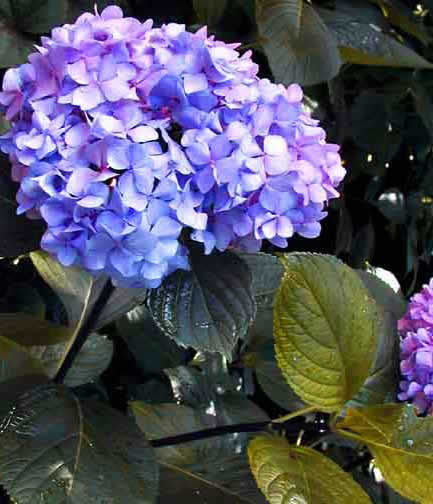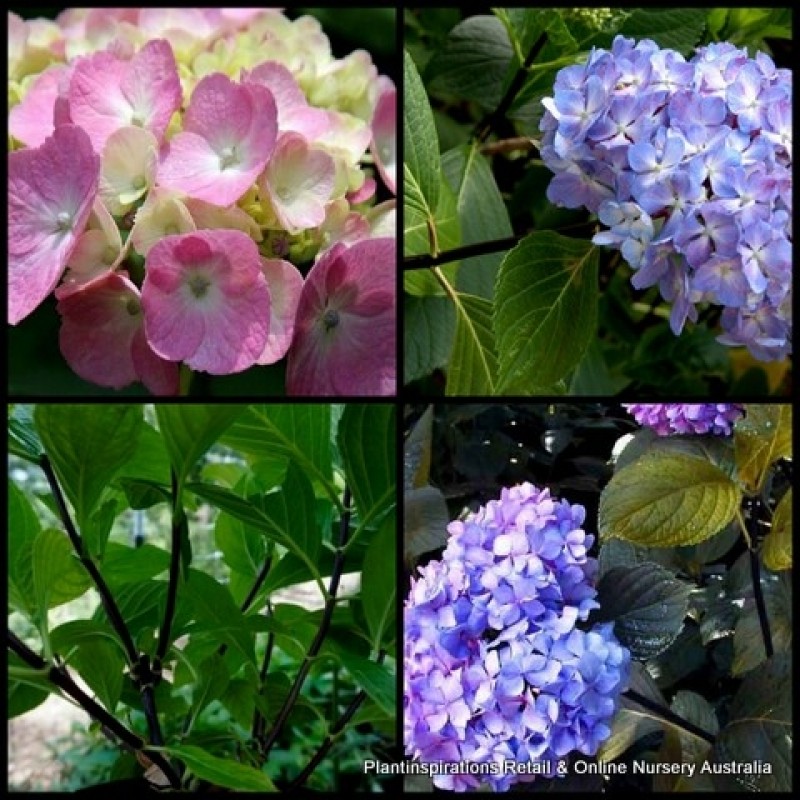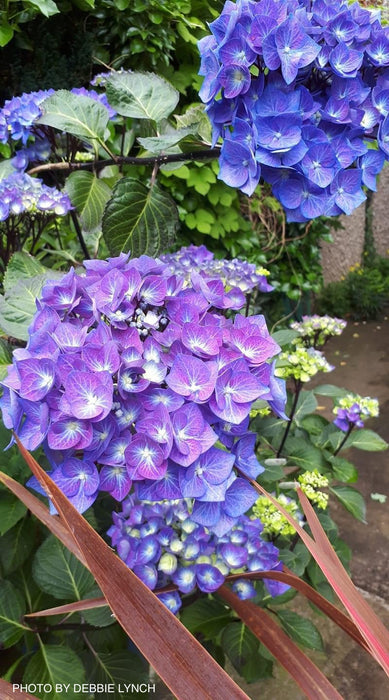The Striking Beauty Of Black Stem Hydrangeas
Hydrangeas are some of the most popular flowering shrubs in the world, and for good reason. They come in a wide variety of colors, sizes, and shapes, and they can be grown in a variety of climates. But one type of hydrangea that is often overlooked is the black stem hydrangea.
Black stem hydrangeas (Hydrangea paniculata 'Black Diamond') are a relatively new variety, but they are quickly gaining popularity. They are known for their stunning black stems, which are in stark contrast to their white or pink flowers. The black stems are especially striking in the fall, when they stand out against the changing leaves.
In addition to their beautiful black stems, black stem hydrangeas also have a number of other advantages. They are relatively easy to care for, they are drought tolerant, and they can be grown in a variety of soil types. They are also deer resistant, which is a major plus for gardeners in areas with a high deer population.
If you are looking for a striking and easy-care hydrangea, then black stem hydrangeas are a great option. They are sure to add a touch of elegance to your garden.
Main Content
Here are some additional details about black stem hydrangeas:
- Size: Black stem hydrangeas can grow up to 8 feet tall and 6 feet wide.
- Bloom time: Black stem hydrangeas bloom in late summer to early fall.
- Light requirements: Black stem hydrangeas prefer full sun to partial shade.
- Soil requirements: Black stem hydrangeas prefer well-drained, loamy soil.
- Pests and diseases: Black stem hydrangeas are relatively resistant to pests and diseases.
Care and maintenance: Black stem hydrangeas are relatively easy to care for. They need to be watered regularly, especially during the summer months. They should also be fertilized in the spring and fall. Black stem hydrangeas can be pruned in the spring to shape them and remove dead or damaged branches.
Propagation: Black stem hydrangeas can be propagated by cuttings or by division. Cuttings should be taken in the spring or summer, and they should be rooted in a well-drained potting mix. Division can be done in the spring or fall.
Folklore and symbolism: Black stem hydrangeas are associated with a number of different meanings and symbolism. In Japan, they are associated with heartfelt emotion, gratitude, and apology. In China, they are associated with good luck and prosperity. In Europe, they are associated with love and romance.
Conclusion
Black stem hydrangeas are a beautiful and versatile addition to any garden. They are easy to care for, they are drought tolerant, and they can be grown in a variety of climates. If you are looking for a striking and elegant hydrangea, then black stem hydrangeas are a great option.
If you're looking for a beautiful and unique shrub to add to your garden, then the black stem hydrangea is a great option. These stunning plants have dark, glossy stems that contrast beautifully with their large, colorful flower heads. In the fall, the leaves turn a vibrant yellow, which further highlights the black stems.
Black stem hydrangeas are relatively easy to care for, and they can thrive in a variety of climates. They prefer full sun to partial shade, and they need well-drained soil. These plants are also relatively drought tolerant, so they're a good choice for areas with hot, dry summers.
If you're interested in learning more about black stem hydrangeas, I recommend visiting . This website has a wealth of information about these plants, including care tips, planting instructions, and varieties to choose from.
FAQ of black stem hydrangea
1. What is black stem hydrangea?
Black stem hydrangea is a type of hydrangea that is characterized by its dark, blackish-brown stems. It is a deciduous shrub that can grow up to 6 feet tall. The flowers of black stem hydrangea are typically white or pink, but they can also be blue or purple.
2. What causes the black stems on hydrangeas?
The black stems on hydrangeas are caused by a fungus called anthracnose. Anthracnose is a common disease that affects many types of plants, including hydrangeas. The fungus can live in the soil for years and can be spread by water, wind, or insects.
3. How can I prevent black stem on hydrangeas?
There are a few things you can do to prevent black stem on hydrangeas:
- Plant hydrangeas in well-drained soil.
- Water hydrangeas deeply and regularly.
- Mulch around hydrangeas to help keep the soil moist.
- Prune hydrangeas in the spring to remove any dead or diseased branches.
- Apply a fungicide to hydrangeas in the spring and fall to prevent anthracnose.
4. How can I treat black stem on hydrangeas?
If your hydrangeas have black stems, you can treat them with a fungicide. There are many different fungicides available, so you should choose one that is specifically designed to treat anthracnose. You should also prune away any dead or diseased branches.
5. What are the benefits of black stem hydrangea?
Black stem hydrangea is a beautiful and low-maintenance shrub. It is resistant to deer and rabbits, so it is a good choice for gardens where these animals are a problem. Black stem hydrangea is also a good choice for gardens with limited sunlight, as it can tolerate partial shade.
Image of black stem hydrangea
- Image 1: A close-up of a black stem hydrangea flower head. The petals are a light pink color, and the black stems are in sharp contrast.

- Image 2: A full-size black stem hydrangea bush in bloom. The flowers are a deep pink color, and the black stems are a striking accent.
- Image 3: A black stem hydrangea bush in autumn. The leaves have turned yellow, and the black stems are still visible.

- Image 4: A black stem hydrangea cutting in a pot. The cutting has several leaves, and the black stems are a deep, rich color.

- Image 5: A black stem hydrangea bonsai tree. The tree is small and compact, and the black stems are a beautiful contrast to the green leaves.

Post a Comment for "The Striking Beauty Of Black Stem Hydrangeas"